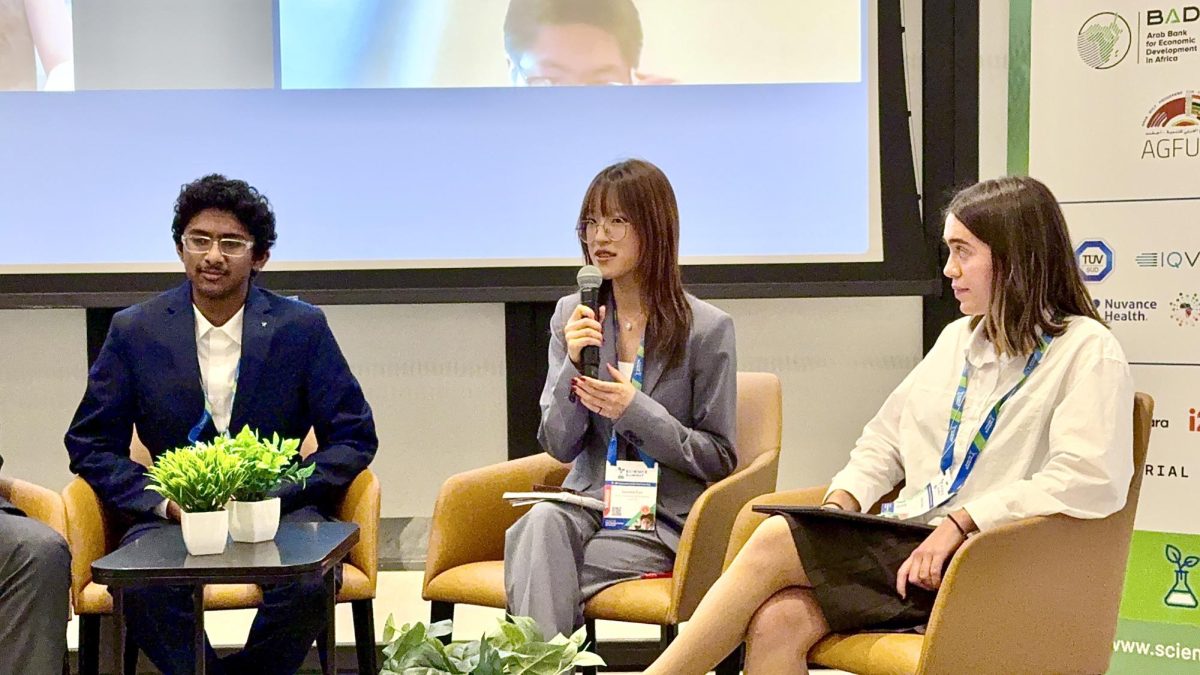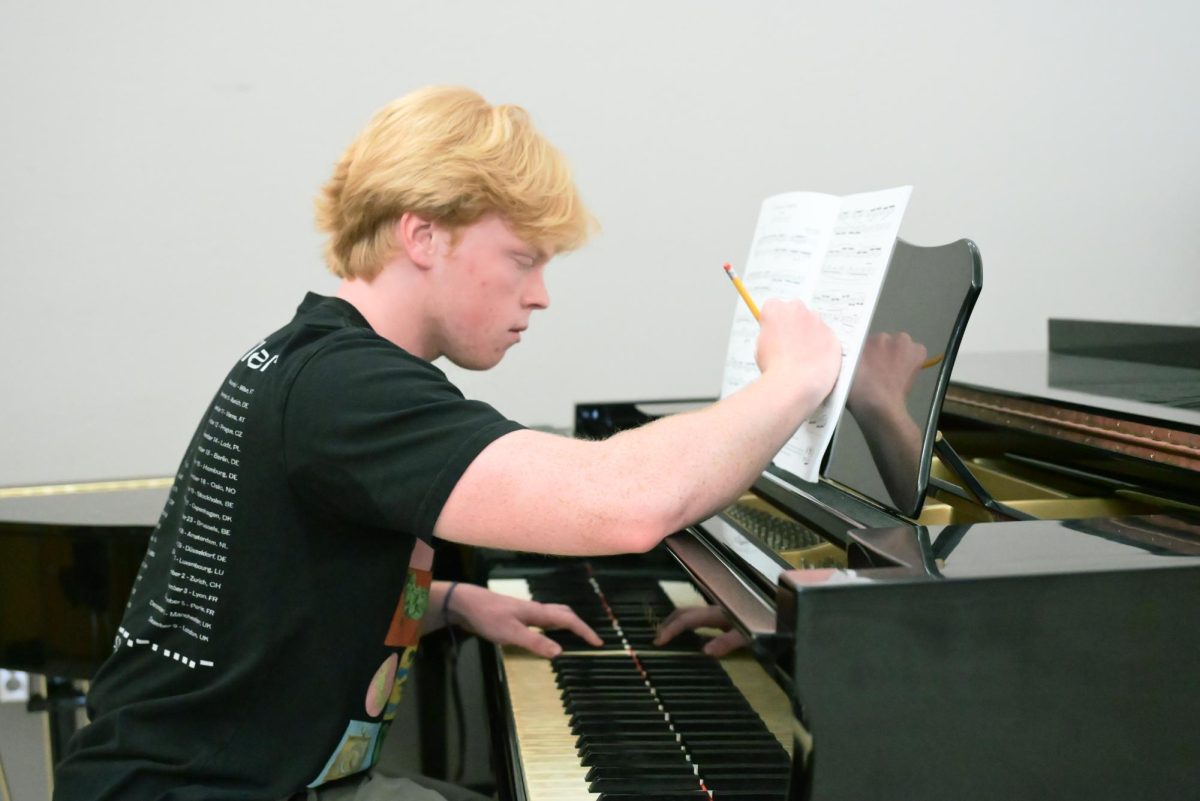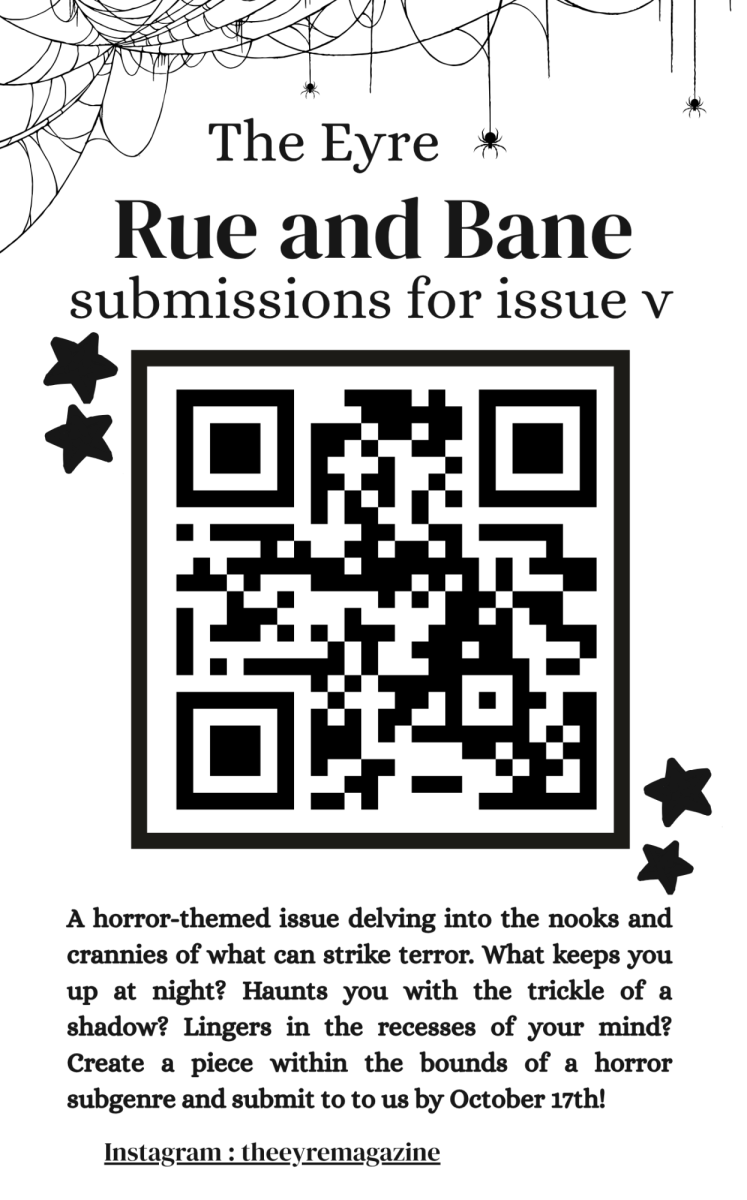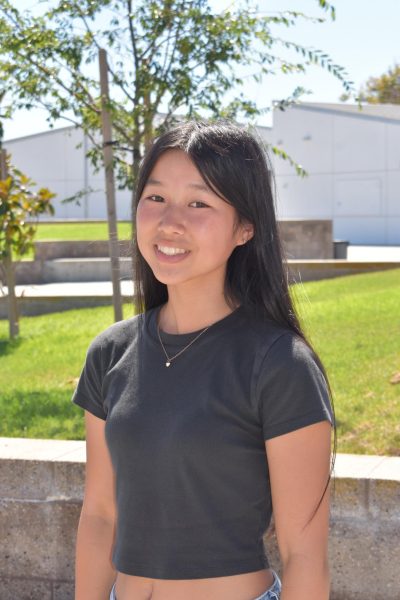
Taking a deep breath, Sydney Zhang (12) walked up to the podium on the stage of the UN Science Summit in New York City, Oct. 5. Looking around at the crowd full of United Nations delegations from different countries, Zhang felt his nerves rising, but he knew that he was well prepared for his presentation.
“When you’re on a stage talking to a lot of people, sometimes your mind just stops at moments, like, ‘Oh, my goodness, there’s so many people staring at me,’” Zhang said. “I was nervous, but I think I held it pretty well, and I’m happy with my presentation.”
Zhang was selected as one of 25 global youth leaders to serve on the Youth Parliament, where students worldwide present how they can help achieve the UN Sustainable Development Goals that were previously discussed in the UN General Assembly. These goals seek to address issues including health, housing, poverty, and climate change. Zhang’s presentation was part of a section called One Health.
In his presentation, Zhang focused on dry disease, a condition where your eyes dry out because either your eyes don’t produce enough tears or your tears don’t provide adequate moisture to your eyes. This can occur from staring at a screen for too long or consistently wearing contact lenses.
After getting glasses in fifth grade because of his blurry vision and learning about the history of eye issues in his family, Zhang said that he knew he wanted to learn more about eye health.
“I got interested in what makes the eyes so important because a lot of my family members got glaucoma and all sorts of eye diseases,” he said. “When I looked into it, I found that dry disease actually is a very common disease, but it’s often overlooked.”
Zhang created two diagnostic methods: a paper-based diagnostic kit and an app called EyeScore. These allow people to help dry-eye patients have convenient, in-home eye exams with no cost. He started working on this project when he was in seventh grade, and over time, he built a small lab space in his garage to experiment.
His first diagnostic method uses a lateral flow assay, a paper-based test that indicates dry-eye disease. Inspired by COVID-19 testing kits, his invention works by adding a tear sample to the end of the strip of paper. If the patient has dry eye disease, a double red line will appear on the paper.
“When you have less tears, your eyes become inflamed because they don’t have enough nutrients or tears to supplement the eyes,” Zhang said. “There’s these chemicals called biomarkers that form that increase or decrease in levels. My test identifies the levels of these biomarkers so that patients can know before symptoms like blurriness arrive and get an early diagnosis.”
After inventing his first diagnostic method, Zhang wanted to figure out another approach that didn’t require tears because tear samples are difficult to obtain due to their small sample volume.
“I thought, ‘What if there’s an easier way to measure this diagnosis?’” Zhang said. “‘What if I use a technology that nearly everyone has: a smartphone?’”
To accomplish this, Zhang needed to learn how to code. After a year of planning, designing, and coding, the app EyeScore was born. The app works by taking a one-minute video of the user’s face and counting the number of blinks through a facial landmark-based algorithm that determines when the eyes are opened or closed. In addition to the number of blinks, the app gives patients a questionnaire about their gender, age, whether they wear contacts or not, and whether they have any eye discomfort like itchiness or pain.
“The [eye blink rate and questionnaire] contribute to one number,” Zhang said. “I called it the Eye Healthiness Score and it ranges from a 0-10 scale. 0-3 is normal, 4-6 is pre-dry disease and 7-10 is dry.”
If they have a high score, patients are recommended to go to the eye doctor and get a diagnosis and treatment.
“I wanted to bring awareness to these issues,” Zhang said. “One of the key problems about the disease is that it’s often very late when it comes to diagnosis because people disregard it. By doing early diagnosis, patients can get treatment earlier so they don’t get severe symptoms.”
While at the Science Summit, Zhang connected with the other students who also presented about One Health.
“It was really awesome meeting people,” he said. “There were a lot of people from around the world, like Kuwait and Dubai. It was cool seeing what inspired them. There are all sorts of different paths they took to do the research.”
Right after the One Health group presented, they got to meet members of the South African delegation, who gave a panel discussion about how advanced technology can help address healthcare challenges in South Africa.
“I found it really inspiring when they came up and they talked about how impactful they thought that all these youth projects were,” Zhang said.
In addition to the South African delegation, Zhang said he had the opportunity to talk to people from the We Are Family Foundation, a program dedicated to mentoring young innovators who are making a positive change in the world. This panel consisted of college students and graduates who gave Zhang advice about pursuing a career in the medical field.
“They came to talk to us about how to do research after graduation [and] getting to college,” Zhang said. “They’re all really amazing. I think it was really awesome hearing their experiences doing research and I think I definitely want to follow their path.”





